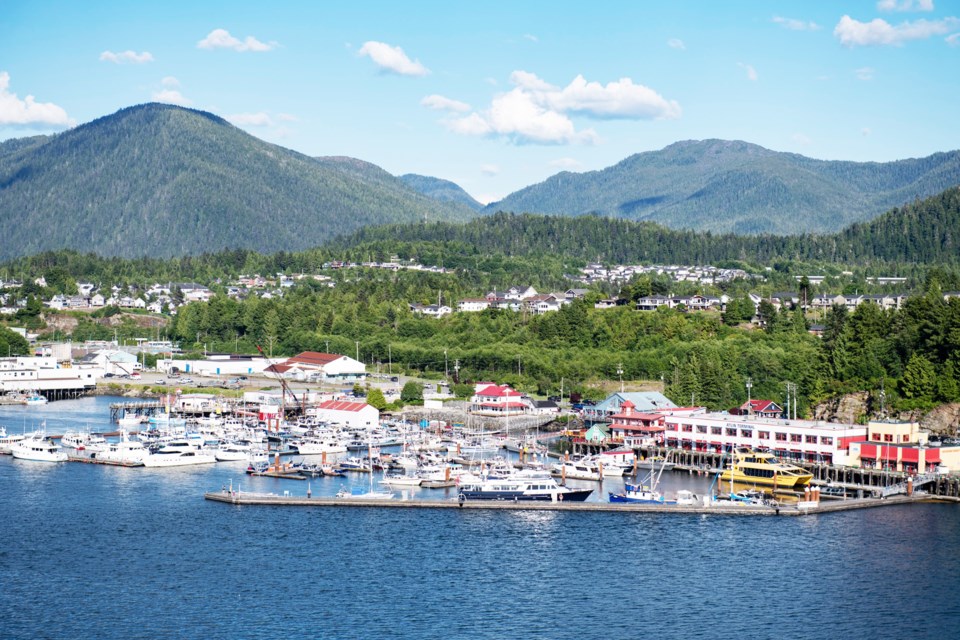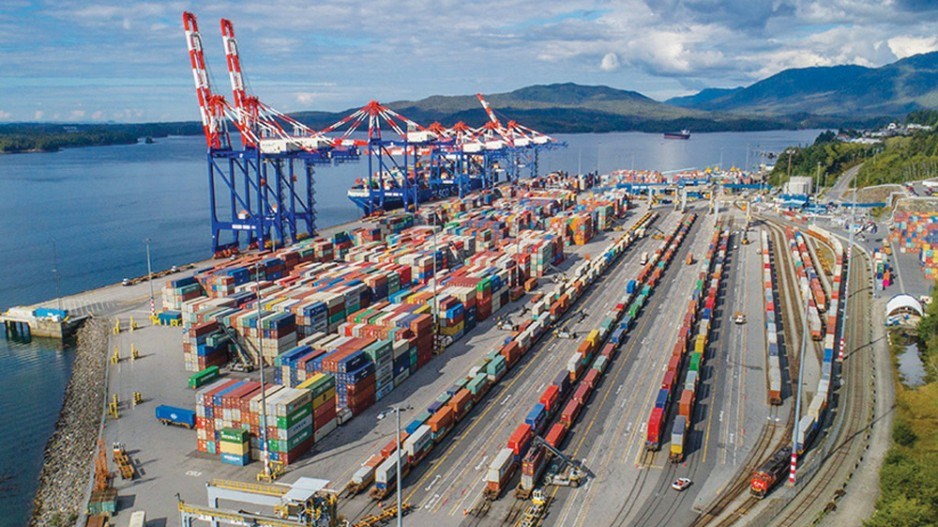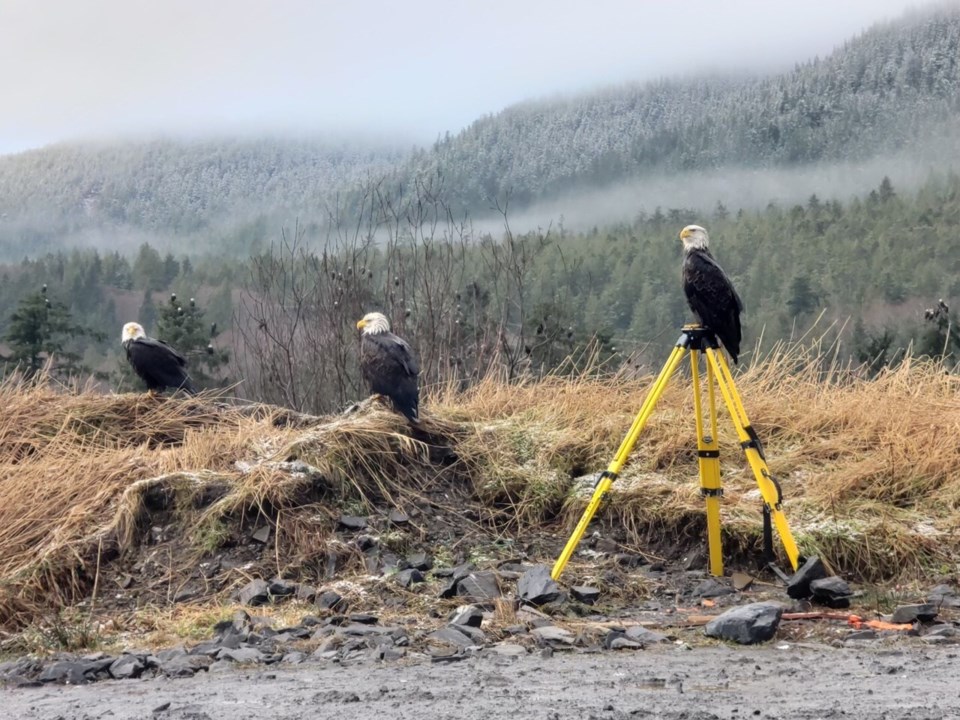Prince Rupert — B.C.’s second most important port city — has been hit with more than $165,000 in environmental penalties.
The Environment Ministry issued the penalties to the city for failing to properly manage two landfills and letting thousands of litres of raw sewage leak into two streams and the city’s harbour.
It’s the latest in a long line of sanctions resulting, city staff say, from a confluence of aging infrastructure, new federal regulations and the growing impact of climate change.
The violations connected to the city’s sewage system span a nearly two-year period ending in September 2024, during which the city experienced multiple sewer outfall failures, pipe leaks and breaks.
In one case, more than 4,100 litres of raw sewage poured into Hays and Morse creeks, two creeks that contain multiple fish species, Kelly Mills, director of the Environmental Management Act, wrote in her decision.
Mills said some of the discharges of raw sewage as a result of outfall failures were to the shoreline or near shore in Prince Rupert Harbour.
The harbour is home to crabs, shrimp and green sea urchins, among other species. At times, a number of species at risk are also found in the harbour, including Steller sea lions; killer, humpback and grey whales; harbour porpoises; leatherback sea turtles; green sturgeons; and the bluntness sixgill sharks, among others.
Sewage releases ruled 'moderate' violations
The raw sewage discharged into the two creeks and the ocean was found to pose a risk to the environment and human health, said Mills. She pointed to several pathogens found in untreated effluent that can be toxic to both wildlife and humans.
The director added $6,460 to the environmental penalty after finding the city gained an economic benefit from its failures, but tempered that increase with a $1,000 penalty reduction after the city mandated “some efforts” to mitigate the failures — using vacuum trucks and spill pads to clean up messes, and temporary seals and clamps to fix broken infrastructure.
In other cases, the city dug up “materials” and sanitized areas.
Prince Rupert’s failure to maintain its sewers represented a “moderate” contravention of the province’s environmental laws, Mills determined.

Old infrastructure leads to legacy of non-compliance
Victoria was the last major coastal city in North America to flush raw sewage into the ocean before it ended the practice in 2020. Prince Rupert, meanwhile, has had a permit to release untreated sewage into Prince Rupert Harbour since 1980. The practice continues to this day.
The city has been working to upgrade that system. But according to deputy city manager Richard Pucci, at least 40 kilometres of pipe were installed before 1960, much of it during the Second World War.
“Like all other city infrastructure, the sewer and drainage system operates in a semi-failure state with multiple breaks per week,” Pucci said in a recent staff report to council.
Landfill problems lead to $147K in penalties
Beyond the sewer system, Prince Rupert has had a history of environmental violations around solid waste disposal stretching back decades.
Last year, a deleterious substance at one landfill led to the death of 19 eagles.
The latest penalties apply to the decommissioned Wantage Road landfill — hit with a $26,000 environmental penalty — and a much heavier $121,000 penalty at the operational Prince Rupert landfill.
The older landfill has a long history of industrial and commercial activity, including an old U.S. Army Core of Engineers gravel quarry and munitions building. At a nearby golf course, municipal waste and hog fuel from the landfill were approved to construct some fairways and greens.
Despite its decades of use, the landfill was never lined with a barrier, and no system was set up to capture the concentrated liquid waste that comes out of the facility.
City squeezed by regulations, costs and limited tax base
Part of the problem, said Pucci in an interview, is money. While the city is home to Canada’s second-largest port, that infrastructure operates under federal jurisdiction and the municipality has limits on what it can tax.
“These legislative barriers don’t help. We’re missing out on millions of dollars. It’s coming off the backs of our taxpayers,” said Pucci, pointing to the city’s nearly 13,000 residents.
“Municipalities really only have one source of revenue. That’s property taxes.”

Aging sewer infrastructure is not unique to Prince Rupert. In Metro Vancouver, the regional body has seen major cost overruns as it too works to meet new federal mandates surrounding sewage treatment.
The difference, said Pucci, is that those costs are spread out across more people in a place like Vancouver.
“I think it takes a bigger toll on smaller communities,” he said.
Prince Rupert’s aging infrastructure combined with federal mandates for water and sewage treatment mean the city is facing up to $375 million in upgrades by 2030. Meanwhile, the city’s infrastructure deficit has crept into the $500-million-plus range, added Pucci.
“We’ve almost exhausted our entire borrowing capacity,” he said. “Frankly, we just don’t have the money, and we’re a bit handcuffed around generating it.”
Climate change taking a toll
Despite its financial and regulatory problems, Prince Rupert is looking to expand a pilot water treatment project to filter sewage through wetland soils and vegetation like a “big planter box,” as one city staff person put it.
One environmental challenge it faces, however, is the fact that the modern landfill is built next to the ocean. In the summer, microbes break down much of the toxic properties of liquid waste, allowing it to flow into nearby collecting ponds as a kind of garbage “tea.”
But in the colder months, those bugs go dormant. And that’s when the rain comes.
Prince Rupert is already Canada’s rainiest city. Climate projections suggest rainfall could increase another 15 per cent in the coming decades. Pucci said his team is already seeing the change on the ground.
In recent years, a steady stream of atmospheric rivers and other extreme rain and wind events has meant a lot more water is running through the landfills and sewer systems.
That has prompted overflows at collection ponds and forced sewage outflows into the environment. A steady stream of environmental penalties has followed.
“I don’t think we could imagine how much weather and precipitation we would be getting in the last couple of years,” said Pucci. “Non-stop rain for days and days. It is a change from what it was a few years ago.”
Correction: A previous version of this story stated Prince Rupert's port was the second largest in Canada. It is, in fact, the third largest after Vancouver and Montreal.





